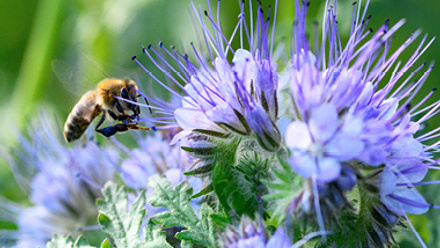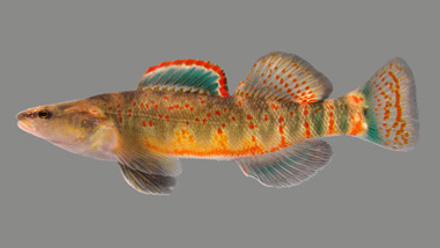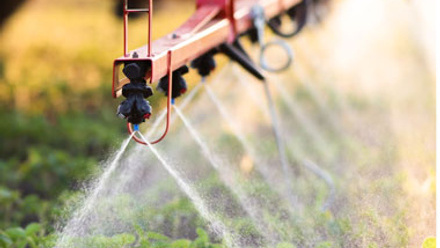Aquatic and Terrestrial Plant Ecology, Ecotoxicology and Risk Assessment
Guido Gonsior, GG Bio Tech Designs, and Rena Isemer, Bayer AG
Plants are key structural and functional components of aquatic and terrestrial ecosystems, linking food webs and biogeochemical cycles. These important parts of our environment are threatened by climate change, increased agricultural land use, and urban and industrial pollutants. The adequate protection of plant communities from adverse impacts of chemicals and other man-made stressors must be ensured via appropriate risk assessment schemes, test methods and modeling approaches. Accordingly, the session, “Aquatic and Terrestrial Plant Ecology, Ecotoxicology and Risk Assessment,” was held at the SETAC Europe 32nd Annual Meeting this May in Copenhagen, Denmark, organized by the SETAC Plants Interest Group (IG), which focused on improving research approaches for these areas. Insights into the impacts of contaminants and pollutants on plants, including algae and higher aquatic and terrestrial plants, were given to aid the concept of a reduced pollution society.
We received abstracts for around 35 presentations (oral and posters, on-site and virtual only) representing research from the areas of academia, government and business, with a balanced number of contributions on aquatic macrophytes (13), terrestrial plants (13) and algae (8). We believe that the hybrid set-up of the meeting caused an increase in abstract submissions (15 abstracts were submitted in 2021), and we were very happy to see that quality of the contributions was maintained. According to the number of submitted abstracts, we were able to have nine presentations given live on stage at the meeting in Copenhagen in two consecutive presentation blocks. The session was well attended (more than 50 people in the room), and each presentation was followed by lively discussions and questions. In addition to the presentations, 17 posters were presented live in Copenhagen and five contributions (posters and presentations) were available as virtual only. All contributions can be viewed on the conference website until August 2022.
Guido Gonsior, GG Bio Tech Design, and Rena Isemer, Bayer AG, who are both members of the SETAC Plants IG steering committee, chaired the session and opened it by giving an overview on all presentations (two talks on algae, four talks on macrophytes and three talks on terrestrial plants). In addition, participants were invited to submit abstracts for the plants session at the upcoming SETAC North America 43rd Annual Meeting, which will be held from 13–17 November in Pittsburgh, Pennsylvania, and online. The chairs also reminded participants to join the SETAC Plants IG open meeting, which took place face-to-face only in Copenhagen. If you missed it, information will be shared via the IG’s website. Another important date to note in your calendars is the SETAC Plants IG Virtual Open Meeting, which will take place on 14 September. Please contact Rena Isemer for an invite to the Teams call. All SETAC plants IG members will be invited automatically, and the meeting is open to every interested scientist regardless of SETAC membership status.
In the algae part of the session, Frida Book from the University of Gothenburg reported on effects of silica nanoparticles on toxicity of pesticides to algae. This presentation was followed by Daniela Gomez Martinez from University of Gothenburg who presented different analysis of effects of the herbicide diflufenican on the green algae Raphidocelis subcapitata.
The aquatic plants and macrophytes part of the session was opened by Isabelle Van Dyck, from the Belgian Nuclear Research Centre, who reported on effects of radionuclides and heavy metals in combination on Lemna minor growth and how the results can be integrated into a modeling approach. Marie Brown, from Cambridge Environmental Assessment, then presented an approach for selecting new macrophyte species for testing in mesocosm studies, and what additional endpoints could be assessed. After a break, Elisabeth Maria Gross, from the University of Lorraine, closed the macrophytes part of the session by presenting results of a study that evaluated combined impacts of agricultural run-off and climate warming on primary producers and the connected food web.
In the non-target terrestrial plants part of the session, Nicola Montemurro, from the Spanish National Research Council, reported on the usability of treated wastewater for the irrigation of agricultural plants and what the uptake, translocation and metabolism of the contained contaminants may be in the watered crops. By means of a transcriptomic analysis, Marta Jaskulak, from the Medical University of Gdansk, delivered new insights into the responses of Brassica napus plants to contaminants produced by the metallurgical industry. Isemer closed the session with a presentation of a novel method for regulatory testing of terrestrial plants, where instead of overspray, a mimicked drift is used for exposure in the lab as a refinement option.
The session demonstrated the multitude of stressors that plants, both aquatic and terrestrial, are facing in our current environment and how far we have come in evaluating and assessing potential effects of such contaminants. However, we have a long way to go, and this session pointed out both the strengths and weaknesses of the current state of the science. Testing procedures are improving based on our experience and a better understanding of the questions that need to be addressed to improve risk assessments.
Please visit the Plants Interest Group homepage for more information and to join the IG – it is free, even for non-SETAC members.
Author contact: Rena Isemer, [email protected]





